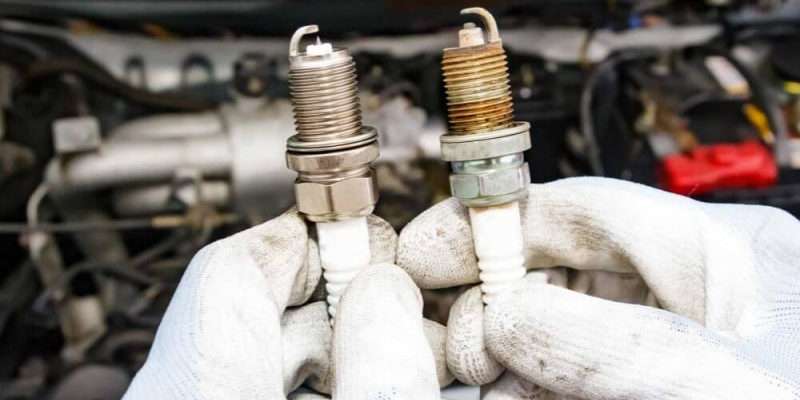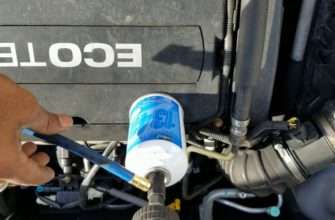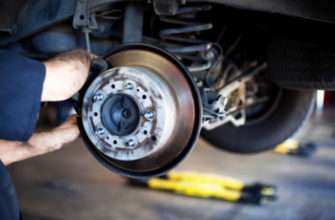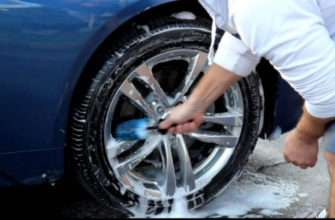Spark plugs are pretty little hard workers. Other than the tires, I believe spark plugs are the most hard-working part of a vehicle. Right from the moment the engine kicks to life, they are in demand. They work non-stop until when the engine is turned off. They are so small, yet they influence many important functions and performance of an engine such as power, fuel consumption, idling, and acceleration.
A good set of spark plugs will give you about 20,000 to 30,000 miles. But of course, this depends largely on your driving style. If you mostly drive at high speeds or on the highway, the gap on the spark plug will increase faster than if you’re driving to the local market several times a week.
Under moderate driving speed, the gap will increase by 0.001-inch for every 2,500 miles. You can extend the lifespan of a spark plug by several thousand miles by cleaning the plug and adjusting the gap. So, how do you clean a spark plug? How do you care for them? This is what we’ll be covering in this article.
Important to note before we delve into the nitty gritty details, the procedure described below doesn’t apply to iridium plugs. Using sandpaper to clean an iridium spark plug could potentially damage the tip of the plug. Here’s how to clean a spark plug.
Differences between spark plugs
There are two types of spark plugs, a ‘hot’ and ‘cold’ plug. Though both look similar, the hot plug has a longer insulator nose which helps retain heat for a hotter tip, while the cold plug has a shorter insulator nose which helps it dissipate heat quickly for a cooler tip.
Advancement in engine technology has made plug types used in a car engine almost irrelevant, but not quite. Using the wrong spark plug in an engine will increase emission, fuel consumption, contaminate the engine oil faster, and in many cases, damage the plug earlier.
It is advisable to use spark plugs that are recommended for a particular engine and its condition of use. Some plugs have a fixed terminal and some have terminals that can be unscrewed. With the type that can be unscrewed make sure the terminal is tight – use pliers if you have to.
Why do spark plugs get dirty?
There are many reasons a spark plug might get fouled or dirty. One such reason could be an air-to-gas ratio that is too rich. This often arises as a result of an incorrect carburetor setting. Inferior piston rings or damaged valve seals can also be the culprit that allowing engine oil to leak into the combustion chambers.
Slow operation or long periods of idling can also cause the problem, as the spark plug might be operating at a temperature that’s not high enough to burn the fuel-air mixture. With time, spark plugs in a 2-stroke engine will start to collect deposits of oil, fuel, or carbon and most people simply replace the old plugs.
While spark plugs need to be replaced on a regular schedule, sometimes you don’t have a new plug lying around when you need to use the equipment. In this case, knowing how to clean a spark plug comes in handy; simply cleaning the firing tip of the spark plug should be enough to get the boat, chainsaw, or lawnmower started.
Removing the plugs
If you’re removing the spark plugs from a car, you’ll have to label the leads with a piece of masking tape before removing them. Label them according to the cylinder they come from because it is really easy to mix them up. To prevent damage that’s difficult to trace, grip each lead by the cap, not by the lead itself.
After removing and labeling the leads, make sure to clean around the plugs with an old paintbrush to avoid contaminants falling into the plug hole when the plugs are removed. If yours are recessed plugs, then you’ll need to use a tire pump to blow away dirt from the area.
Fit a plug spanner over the plug, ensuring it is quite straight so you don’t accidentally damage the plug ceramic. Unscrew the plug and take it out.
Cleaning a Spark Plug
Over the course of thousands of daily explosions, there’s a normal build-up of soot that collects on the spark plugs. These thousands of daily explosions also cause the electrode to wear down, increasing the gap, which, in turn, impacts the vehicle’s fuel economy. When you know how to clean a spark plug, you’ll have the ability to restore it to a usable state that’s close to new.
Clean the Spark Plug with Sandpaper
Now you’ve successfully gotten the spark plug out of the engine, use a piece of fine sandpaper, about 170 or higher, to gently remove the soot deposits.
- If the gap on the spark plug is large enough, fold the sandpaper into half, slide it between the electrode and the arm and gently remove any deposit here.
- If the gap isn’t enough to slide a folded sandpaper, do not force it wider. Use the sandpaper as it is, but ensure you flip it over to clean both arm and electrode.
- Clear out the area between the electrode and the insulator to clear out debris from the groove. You could use something thin and long like a pin to reach into the groove.
- Flip the spark plug so the electrode and arm are facing down then blow off the sanded area; if you’re blowing air from your lungs, you should close your eyes so you don’t get particles in them.
Cleaning spark plugs and grit blasting.
The quick and easy way to clean a spark plug is by grit blasting, but you can clean the electrodes with a fine, flat file if the plug isn’t too dirty.
Use a gapping tool or thin screwdriver to make room for the file by carefully levering open the gap. Clean the treads with a soft wire brush if there’s oil and dirt in the groove. Use the whole plug with a soft cloth to remove the dirt and also make sure the ceramic part of the plug is clean.
If the plug is damp or heavily fouled, quickly heat the tip with a blow lamp or gas ring, as this helps clean both the electrodes and the dirt in the inside part of the insulator.
Grit blasting
Many garages and auto shops have grit blasting equipment and will clean your spark plugs for a token. If you want to, you can get your grit blaster. They run off of a car battery. There’s a rubber seal that holds the plug. Even the dirtiest plug will be cleaned in just a few minutes.
Set the Gap
A job is considered done when it’s done right! After removing the soot on the plug with sandpaper, and blowing out the debris, you’ll need to restore the gap.
Check your owner’s manual for the gap measurement recommended for your particular vehicle. Run a gapper through the space between the electrode and the arm to set the gap. The gapper shouldn’t stick or click through, it needs to touch both sides as it slides through. If it does click or stick, adjust the height of the arm. If it doesn’t touch both electrode and arm, close the gap slightly until it does. Now your plug is ready to resume work.
Refitting the plugs
First, screw the plug in by hand so you know when it isn’t following the tread. If it feels stuck when the plug isn’t completely in, then you might have cross-tread the plug. Applying force here could damage the cylinder head – especially an aluminum one.
Tightening the plugs correctly is vital. You want to make it tight but not so tight that the washer becomes flattened and ineffective. Take care not to over tighten tapered plug else you might have a difficult time removing them again.
Tighten each plug a little beyond hand-tight and refit the ‘numbered’ leads to the correct plug.
Tips
- Just like car tires, when replacing or cleaning your spark plugs, do so for all of them at the same time.
- Do not submerge spark plugs in water, the dirt on them is not water-soluble.
- Get your engine checked if there’s oil and grease caked on the spark plug as this could be blown or bent rings.
- Clean one spark plug at a time. If you’re going to pull all out at once for cleaning, make sure to label the spark plug wires when you do so, this way you won’t be confused when fitting them back.























